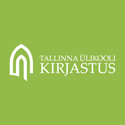Eesti üksustest Wehrmacht’i, SSi ja politsei ning Relva-SSi alluvuses Teise maailmasõja ajal. Komplekteerimisest ja formeerimisest. [Estonian Units in the Wehrmacht, SS and Police System]
Abstract
In the course of the Second World War, Estonia was occupied by two totalitarian states. In 1940–1941, and again, from 1944 on, the occupier was the Soviet Union, but during the years 1941–1944, it was Nazi Germany. And Estonians fought in the security and military forces of both occupiers. Plus, Estonians who had fled to Finland, also fought in the ranks of the armed forces of that nation. When Germany at first attacked the USSR, in June 1941, it wasn’t interested in recruiting the inhabitants of the freshly conquered lands into its armed forces. But already in July, the Germans realized that they needed additional manpower, especially for securing the rear of their army; for transporting the large numbers of Soviet prisoners of war; as well as for guarding roads, railroads, bridges, military bases, etc.
At first, the Germans began to organize units of auxiliaries recruited from amongst anti-Communist Soviet prisoners of war, and later, also made use of volunteers from amongst the civilian population of the occupied territories. And many Estonians were ready to join the German armed forces, so as to help free their homeland of the Communist occupiers, and to fight on the front against the Soviet Union. The German Wehrmacht (unified armed forces of Germany from 1935 to 1945) was, at first, greeted in Estonia as a force freeing the country of the hated Communist regime. It was believed that the Germans would restore Estonian independence, and that fighting in their armed forces would help this process along.
Full Text:
PDFRefbacks
- There are currently no refbacks.
Kirjastaja / Published by:

ISSN 2228-0669 (trükis / print)
